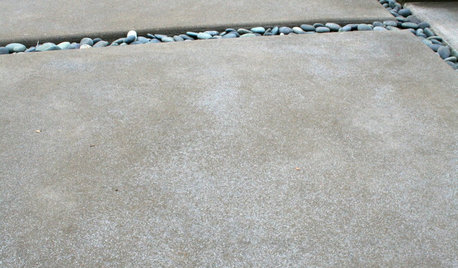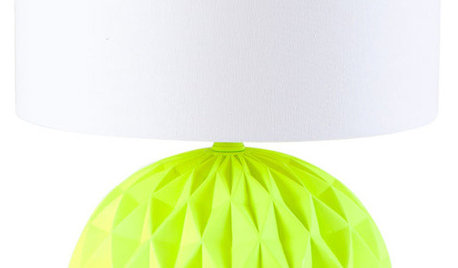Adding citric acid........
greenhouser
15 years ago
Related Stories

DESIGN DICTIONARYAcid-Etched Concrete
Acid etching prepares concrete to bond with paint, an epoxy or a stain
Full Story
HOUSEKEEPINGHow to Clean Marble Countertops and Tile
Acidic solutions can damage your marble surfaces. Here’s how to keep marble looking clean and amazing
Full Story
PRODUCT PICKSGuest Picks: Flash a Little Neon
Make your rooms come alive with acid-green glassware here, electric pink candles there and decor in a whole host of other hot colors
Full Story
HOUZZ TOURSMy Houzz: Scandinavian Simplicity in a Pennsylvania Colonial
Patiently peeling away old layers and adding fresh design elements leads to a bright new look for an outdated home
Full Story
WINTER GARDENING7 Container Plantings to Bring Winter Gardens to Life
Adding instant color but with long-lasting practicality, these plant groupings are bright spots in a slumbering wintertime garden
Full Story
GARDENING GUIDESGrow a Beautiful Garden in Alkaline Soil
Got alkaline soil? Learn how to manage it and the many beautiful plants that will thrive in this ‘sweet’ soil
Full Story
REMODELING GUIDESObjects of Desire: Beautifully Individual Concrete Floors
Concrete comes in more colors and finishes than ever before. See if these 6 floors open your eyes to the possibilities
Full Story
KITCHEN DESIGNDream Spaces: 12 Beautiful White Kitchens
Snowy cabinets and walls speak to a certain elegance, while marble counters whisper of luxury
Full Story
KITCHEN DESIGNKitchen of the Week: Quirky Texas Remodel
Playful Remodel Amps Up the Personality of 130-Year-Old Kitchen
Full Story
ARTYour Guide to Custom-Framing Photos and Art
Get the lowdown on framing materials, methods and more
Full Story





digdirt2
greenhouserOriginal Author
Related Professionals
Saint Matthews Landscape Architects & Landscape Designers · Middletown Landscape Contractors · Wilmington Landscape Contractors · Allentown Landscape Contractors · Brooklyn Park Landscape Contractors · Las Vegas Landscape Contractors · Long Beach Landscape Contractors · Manhattan Landscape Contractors · Pacifica Landscape Contractors · Point Pleasant Landscape Contractors · Wentzville Landscape Contractors · Eastlake Landscape Contractors · Houston Roofing & Gutters · California Roofing & Gutters · Rochester Hills Driveway Installation & Maintenancezeuspaul
greenhouserOriginal Author
digdirt2
digdirt2
francienolan
francienolan
digdirt2
digdirt2
shirleywny5
zeuspaul
shirleywny5
francienolan
ksrogers
greenhouserOriginal Author
greenhouserOriginal Author
greenhouserOriginal Author
francienolan
zeuspaul
Linda_Lou
whynotmi
ksrogers
digdirt2
greenhouserOriginal Author
greenhouserOriginal Author
francienolan
digdirt2
whynotmi
ksrogers
digdirt2
francienolan
shirleywny5
Linda_Lou
greenhouserOriginal Author
greenhouserOriginal Author
lynn_1965
zeuspaul
digdirt2
ksrogers
Linda_Lou
whynotmi
greenhouserOriginal Author